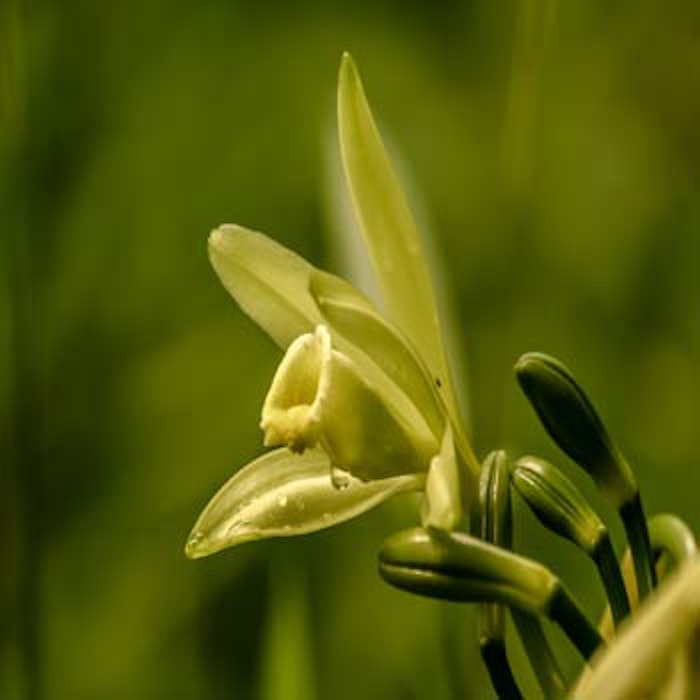
Editor’s note: This article is the first in a series of four describing the chemical characterization of V. pompona Scheide. GC-MS, DTD-GC-MS and GC-O/MS were used to indicate its quality as a potential source of aromatic compounds for fragrance applications. Here, existing literature on V. pompona is reviewed and compared with V. tahitensis and V. planifolia. Test protocols for GC-MS and DTD-GC-MS are described, and some results are discussed.
Part II will continue with results from these tests and a discussion. Part III will set up the GC-O/MS protocol, while Part IV will conclude the results and describe how the chemical distribution of V. pompona impacts its odor profile.
Among the cultivated species, V. pompona is uniquely regarded as resistant to climate change and diseases, including the lethal Fusarium or root rot disease. As a result, it has been preferred for hybridization programs with V. planifolia to produce a more resistant aromatic hybrid. Such hybrids have been successfully introduced in several countries such as Costa Rica. As noted, here, existing literature on V. pompona is reviewed, and a sample of cured V. pompona beans from the region of Veracruz, Mexico, was characterized by GC-MS and direct thermal desorption-gas chromatography-mass spectrometry (DTD-GC-MS).










